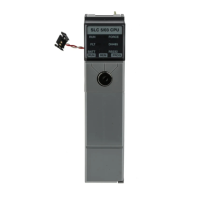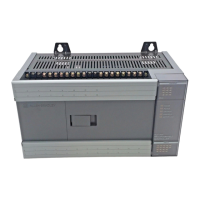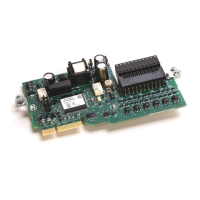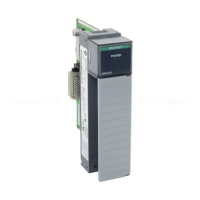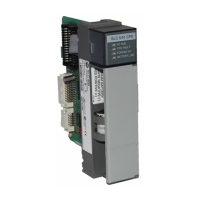Publication 1747-RM001G-EN-P - November 2008
SLC Status File B-59
S:67 to S:82 Dynamic Config DF1 Radio Modem Store and Forward Table
In DF1 Radio Modem with Store and Forward enabled in the
channel configuration, these 16 words are bit mapped to
represent the 255 possible nodes and the broadcast
address. The user is required to set these bits to enable
Store and Forward operation. For a node on the radio
modem network to rebroadcast a message, both the
message’s destination and source addresses must have
their respective bits set in this table. To rebroadcast a
broadcast message (destination = 255) only bit S:82/15
needs to be set.
•••
S:83 to S:86 Status Channel 1 Active Node Table
These 4 words are bit mapped to represent the 64 possible
nodes on a DH+ link. S:83/0 through S:86/15 represent node
addresses 0 to 63 (0 to 77 octal). These bits are set by the
processor when a node exists on the DH+ link that your
processor is connected to. These bits are cleared when a
node is not present on the link.
Note that S:34/1 must be set for the above words to work.
•
S:87 to S:98 NA Reserved •
S:99 Dynamic Config Global Status Word
Data placed in this memory location is transmitted as the
processor’s Global Status Word and is sent to all other
devices on the DH+ network every time the processor
passes the DH+ token.
•
S:100 to
S:163
Static
Config
Global Status File
When a processor passes the DH+ token to the next node, it
also sends a 16-bit word called the Global Status Word
(S:99 and above). All of the nodes on the network read the
Global Status Word sent by each processor and saves the
word to memory. Each processor has a table (Global Status
File) in memory where global status words from other
processors are stored. This table is completely updated
every token rotation. (Example: The word from node “x” is
placed at S:100 + x.)
You can use the Global Status File as a high-speed
broadcast message for status passing and synchronization
of processors.
•
Table B.4 Status File Functions (Continued)
Address Classification Description Fixed
5/01
5/02 5/03 5/04 5/05

